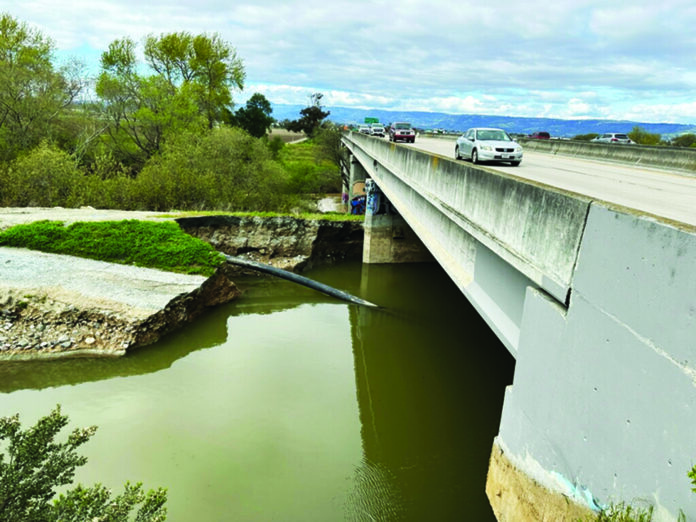
The National Association of Counties (NACo) on July 21 voted unanimously to urge the U.S. Army Corps of Engineers (ACOE) to change the way it funds flood control projects for economically disadvantaged communities.
Currently, the ACOE uses a 1:1 benefit-cost ratio when figuring the feasibility of a project, requiring one dollar of savings for every dollar spent.
That has hurt communities such as Pajaro and Watsonville, since the ACOE formula places a zero on agricultural land.
Under that same formula, higher-income communities with million-dollar homes take precedence over those with lower-value properties.
Under the recommendation from NACo, the ACOE would implement changes to its cost-benefit analysis to offer equitable flood protection for disadvantaged communities.
The resolution carries no requirement for the federal agency to implement the changes. But the unanimous concurrence from NACo—a national organization that helps elevate local issues to a national level—will carry weight for federal lawmakers when they consider the issue, says NACo spokeswoman Rachel Serrao.
The new policy was proposed by Santa Cruz County Board of Supervisors Chair Zach Friend, and received unanimous support from the board four years ago.
“For decades, Santa Cruz County led the fight for improved flood protection along the Pajaro River but were challenged by federal funding formulas that favor wealthier communities,” Friend said. “Now that we are on the verge of finally moving into the design and construction phase, we do not want to see other communities subject to high flood risk left behind.”
Locally, efforts to prevent flooding are set to get a big boost.
The Pajaro River Levee will soon receive a $400 million upgrade by the ACOE to offer 100-year flood protection, with work to begin in spring 2024.
In addition, the county’s Zone 7 Flood Control District has invested millions in flood prevention projects over the years to increase water flow and prevent new breaches on the Santa Cruz County side of the Pajaro River.
This includes the bench excavation project in 2012, during which work crews removed 300,000 cubic yards of sediment along 7.5 miles of the Pajaro River and its tributaries to improve flow and prevent flooding.
The levee was built in 1949 by the ACOE, and failed for the first time in 1955, and was deemed inadequate in the 1960s. There were also floods in 1995 and 1998.
More recently, a breach in March sent floodwaters into the town of Pajaro.













The time is definitely now to change the formula for flood control funding. It is heartening to see some of the socio-economic flaws in funding formulas acknowledged. The fact that agriculture land is valued at 0, especially in light of the contribution of agriculture to the local and state economy, appears to be a persisting gap in the formulas. Based on the 2022 Crop Report for Monterey County, and the 2021 Crop Report Santa Cruz County, agriculture represents an annual economic contribution of over $8 billion. Realistic and logical flood control funding for our rivers and flood plains is critical to the people and the land that support our local and state economy.